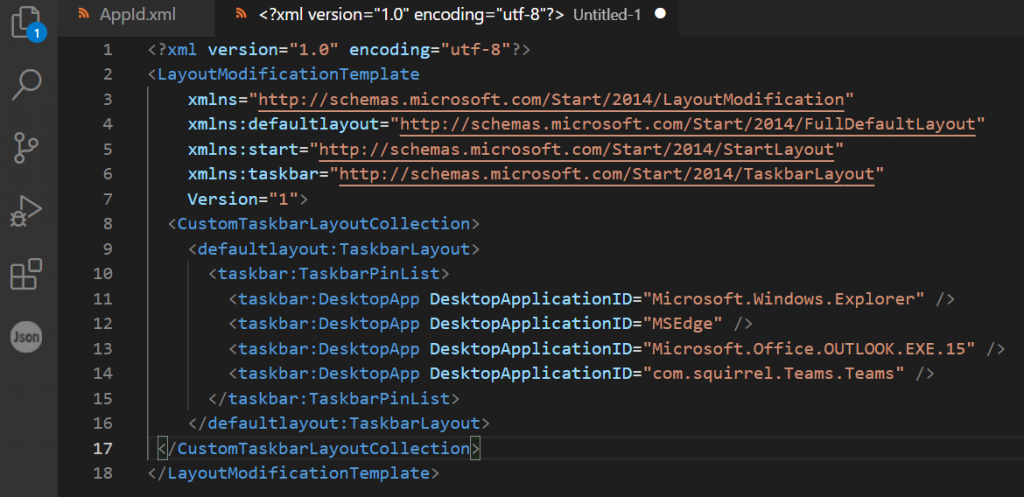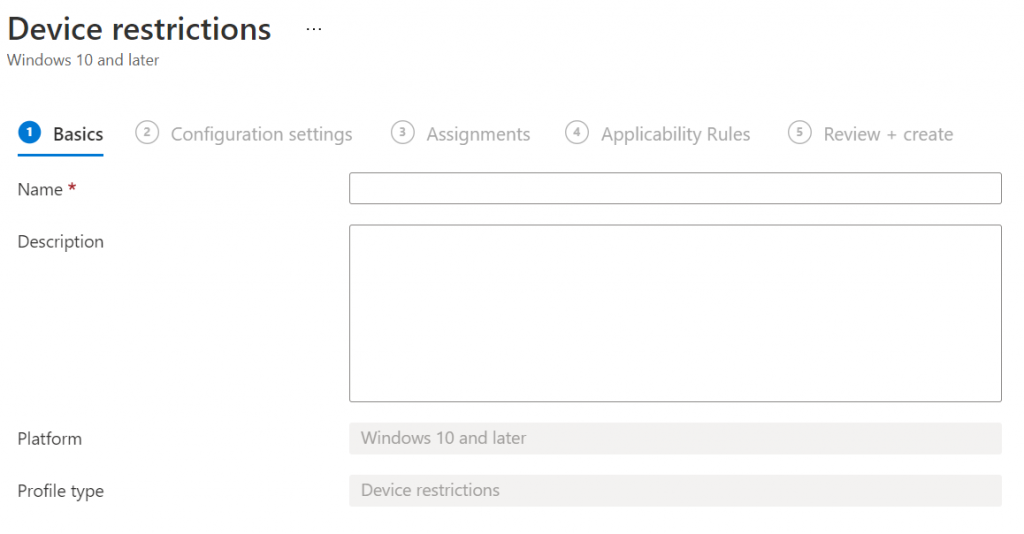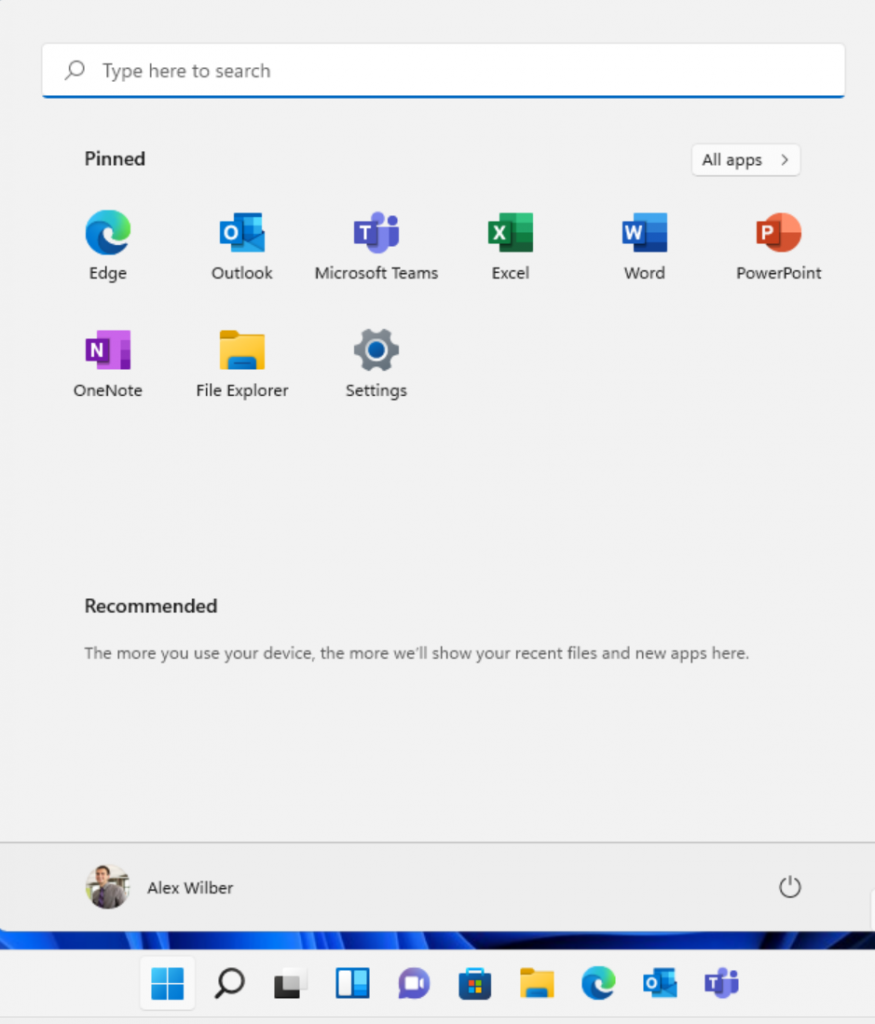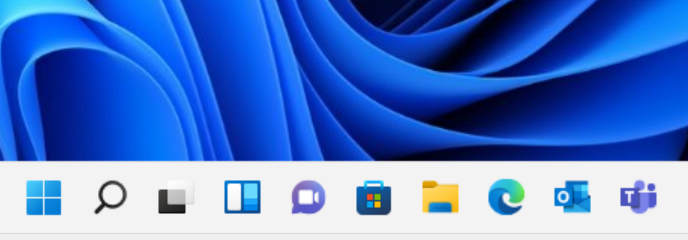For you’re Windows 11 users it is possible to deploy a customized Taskbar to your devices, where users will facing a Taskbar with the application the organization want to be set. There is a difference between configuring the Start Layout and the Taskbar, where the Start layout is set with a custom profile OMA uri in a JSON file format. The Taskbar is still set with a XML and with a configuration profile.
The Taskbar configuration is not as straightforward as the Start Layout see link, there are several steps wee need to do.
First step
First pin the icons on the taskbar which you want to be pinned at the Taskbar. Then run the following script
|
1 |
Export-StartLayout -Path "C:\Layout\AppId.xml" |
We are going to need these in the next steps, in the xml we just created are AppID’s we have to copy into a new XML
Basic XML
|
1 2 3 4 5 6 7 8 9 10 11 12 13 14 15 |
<?xml version="1.0" encoding="utf-8"?> <LayoutModificationTemplate xmlns="http://schemas.microsoft.com/Start/2014/LayoutModification" xmlns:defaultlayout="http://schemas.microsoft.com/Start/2014/FullDefaultLayout" xmlns:start="http://schemas.microsoft.com/Start/2014/StartLayout" xmlns:taskbar="http://schemas.microsoft.com/Start/2014/TaskbarLayout" Version="1"> <CustomTaskbarLayoutCollection> <defaultlayout:TaskbarLayout> <taskbar:TaskbarPinList> <taskbar:DesktopApp DesktopApplicationID="Microsoft.Windows.Explorer" /> </taskbar:TaskbarPinList> </defaultlayout:TaskbarLayout> </CustomTaskbarLayoutCollection> </LayoutModificationTemplate> |
Second step
Check the XML you exported with the name AppId.xml there a several desktopAppId’s

get these out of the XML in the following format:
<taskbar:DesktopApp DesktopApplicationID=”Place the AppID here” />
After adding the new AppId’s it will look something like this

In this example we are pinning Windows Explorer, Edge, Outlook and Teams on the Taskbar. Now because we created our base XML for pinning the apps to the Taskbar we are ready for the fun in endpoint manager
Control the Taskbar layout with Endpoint Manager
Log on to de Endpoint Manager Url link
Go to Devices by platform Windows
Click on Configuration profiles and click on Create profile.
Select Platform Windows 10 or later on Profile type choose templates, Device Restrictions.

Fill in Name, Description and click Next
In the Configuration settings click on Start and then upload the created XML at Start menu layout (Yes i know this sound strange but this is the way to go)

Click on Next, Assign it to a group of you’re liking , Click Next, Review the settings and click Create
Now the setting will sync down on the devices, users can still unpin the created Apps. all the Pinned Applications the user already made will still be available.

